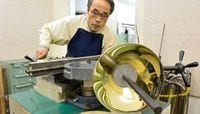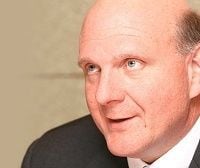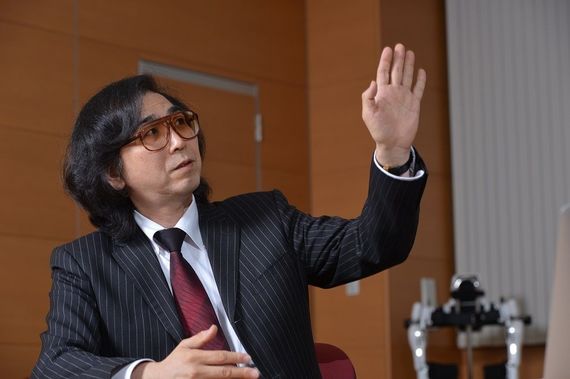
Cyberdyne, which listed its IPO on the Tokyo Stock Exchange in March 2014, is a start up from one of Japan’s leading institutes of technology, the University of Tsukuba. The company manufactures and sells the robot suit, HAL (Hybrid Assistive Limb). HAL was developed based on more than 20 years of research by Company President Yoshiyuki Sankai, a professor at the Graduate Department of the University of Tsukuba.
If people who have lost the use of their legs put on HAL for a fixed period of time, brain, nerve, and muscular regeneration is promoted, and walking function is improved. In 2013 in Europe, HAL was accredited certification as a medical device and became the world’s first medical robot. In the fiscal year that ended on March 31, 2014, sales figures were around ¥450 million with an operational deficit of ¥1.15 billion. The deficit will continue into the fiscal year ending on March 31, 2015. We asked President Sankai about future business developments and his plans to move into the black.
Nakagawa: What is your purpose in developing robots?
Sankai: Until now, society has always changed according to its technology. I want to industrialize the problems society is facing. As the population ages, many patients will need to be supported by relatively few caregivers. It's only a matter of time before we reach the limit. What we’re aiming for is a society without heavy caregivers, a society without bedridden elderly. In order to accomplish this, we’re wrestling two challenges. The first is improving the physiological functions of patients. The other is making sure caregivers can work comfortably. CYBERDYNE will create the technology to address both of these issues. Again, it's not just within our country. We will extend our business to the rest of the world. I want to accelerate towards a society where robots support humans. We already have a variety of robots used for industrial and military purposes, but CYBERDYNE will create an industry that will specialize in medical, welfare, and lifestyle robots. In the same way that automobiles and electrical appliances already do, we will create a business that supports people’s lifestyles. In this field, I want CYBERDYNE to take the lead. I want to play a central role in establishing the rules for the international certification standards.
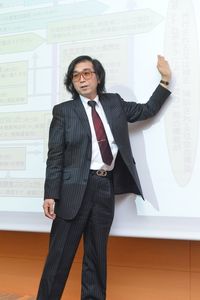
Nakagawa: Why did you go public?
Sankai: In Japan, in 2030, there will be a reversal in the population of producers and non-producers. If at that time we’re still considering what measures to take, it will already be too late. I started my basic research in robotics in 1991, and worked as quickly as possible. In order to turn research into a something real, going public is a very important step. If we don’t hurry, it will be 2030 before the industry is even created. Interest from investors is also high, so it is an easy environment in which to go public.
Nakagawa: Last year you acquired medical device certification in Europe which significantly broadened your business opportunities.
Sankai: Our products are rental only.The reason to not sell is because we need to continuously see if the methods of use are suitable. The “HAL for Medical Use” being developed in Europe is €500 for each one hour to one hour thirty minute treatment. For a 60 use package, the total is €30,000. In Germany, it is covered via public workers’ compensation insurance. If treatment is done at our subsidy's medical center, 100% of the fee is our income. In the case of a public hospital, 40% of the fee is income for our company. We began trials in November of 2013 at our facility. We continued to expand until now we’re able to have 30 people using our devices in a single day. In the interim, Germany’s public insurance decided to introduce rentals in nine hospitals in regions such as Berlin and Frankfurt. From those hospitals we will expand to the medical centers on the outskirts of those areas, and by the later half of the current fiscal year we will enter into the acceleration phase.
Nakagawa: How will the suit be further developed in the future?
Sankai: First, we want to add to our product lineup. Up until now, we’ve been using a type of HAL for either the lower limbs or a single leg, but we’re planning to begin shipping the “HAL for Single Joint” before the end of 2014. Because it can be attached to only the knees or elbows as needed, it can be used for rehabilitation in bed directly after surgery, or similarly at home in a bed or on a chair. It will be an even simpler, more convenient device. Also this year, we will be shipping some of our “HAL Task Support” that will be used by caregivers for back support in order to avoid lumbago. Full-scale development on that line will begin in 2015. Moreover, we are also preparing a health care device for use in everyday life. This year we will be doing a test shipment of a device that detects Cerebral infarction’s three risk factors (arteriosclerosis, arrhythmia, and symptoms of dehydration) that will enter into full-scale development starting next year. We are also preparing a device designed to increase the independence of bedridden patients in the difficulties of in-home care, such as feeding and bathroom assistance. While these devices are being put out over the next five years, we want to establish a system to integrate them into society.
Nakagawa: When do you expect to move into the black?
Sankai: In the fiscal year ending on March of 2015 our proceeds will be at ¥900 million which is nearly double that of the previous year. Five years might be an overstatement, but we’re aiming to double our profits every year for the next few years. After we become profitable, we’ll be glad we listed. Certainly, even if we didn’t invest in research and development or increase our workforce, there’s still the possibility we could become profitable. However, we will venture to make new investments and add new products to our lineup. We will apply for FDA medical device certification in America. Even in Japan, clinical trials are advancing. When our business is built into society we can really get going. Beginning the latter half of the 2015 fiscal year our sales pace will increase, and we’ll see a move into the black in the 2016 fiscal year.
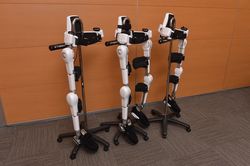
Nakagawa: All of the authority is concentrated on you. That’s very risky.
Sankai: Human resource training to bring up the next challenger is already underway. A “little Sankai” to whom I can trust my work is quickly approaching. But we’re now in the innovation step, and so I have to take on a variety of roles for the time being. When I ask the department head, “what’s going on?” he often responds with “my subordinate said this.” Driven people have to do things themselves. If the managers don’t go all out, things won’t happen. For example, Steve Jobs didn't have any reason to worry about how to use the iPhone. In a technology driven enterprise, managers who can’t see the details of their products aren’t qualified. The essence of anything lies in its details. If the details fall apart, the whole thing will go haywire.


